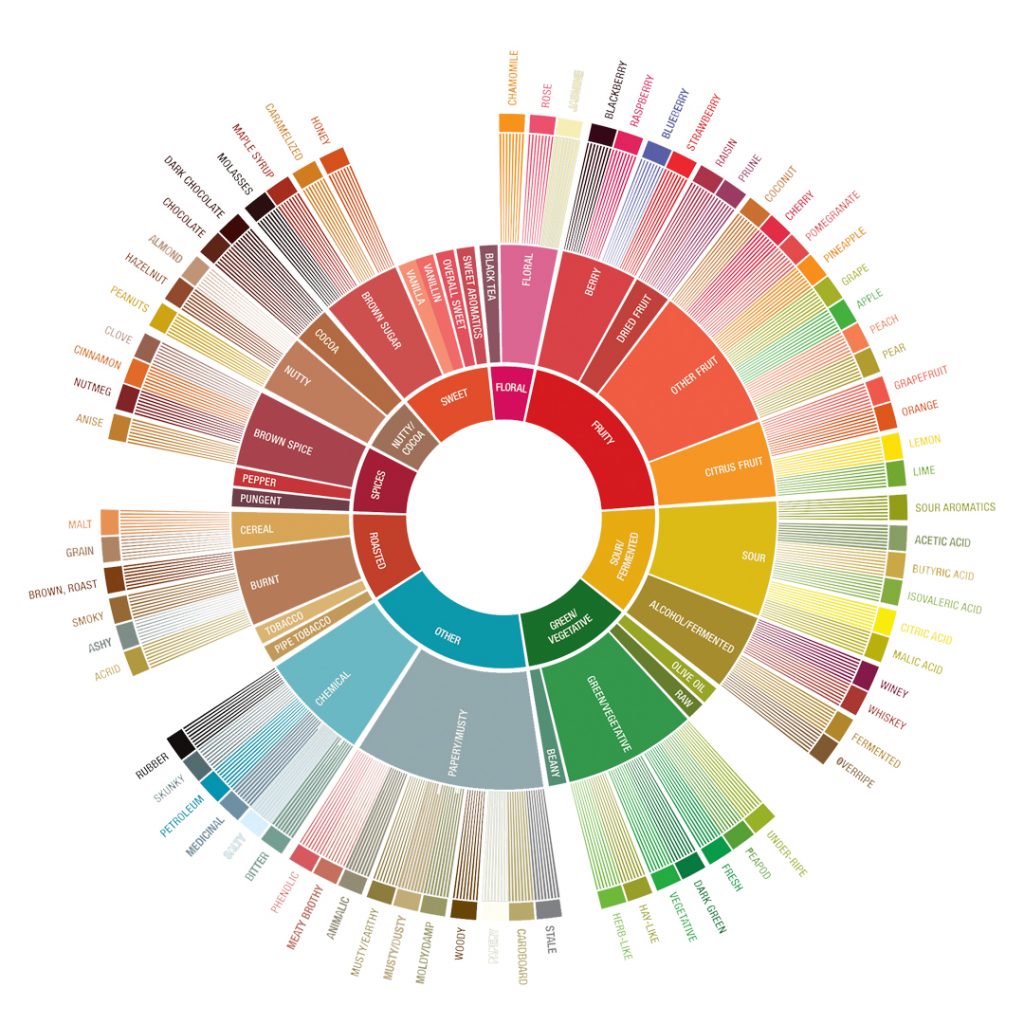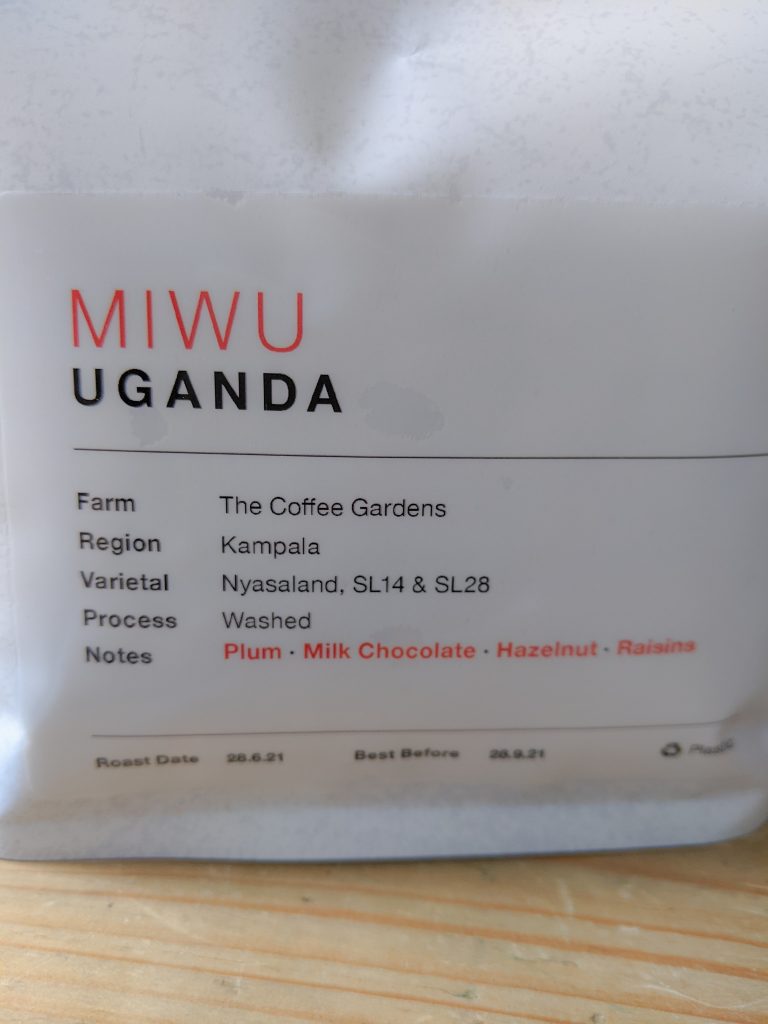One of the my favourite things to do is to shop around for speciality coffee and decide what beans I want to try out for the next few weeks. It is like being a kid in a toy store with so many choices. Unfortunately, you can’t buy everything that piques your interest and you have to make a choice and for me that’s usually deciding on one or two bags of coffee beans.
Now buying a coffee can be a bag of mystery especially when you first start drinking speciality coffee. You may feel a bit unsure at first at how each coffee may differ from another and how to pick a coffee you will enjoy. But you can build a understanding on how a coffee might taste or to your preference just by the information on the coffee pack. So this post I wanted to walk you through what you should be looking into when buying coffee, whether that is in a coffee shop or online.
What is the roast level and is it suitable for espresso or filter?
Let’s be honest. The first thing many people do is look at the flavours notes first before buying coffee. But you should really check if the coffee is suitable for espresso or filter…or sometimes both. Coffee roasters will state on their website or on the bag what brewing method the coffee is for. This is based off how the roasters has roasted the beans. Sometimes you will see the colour differences in the packages to distinguish between espresso and filter.
Paying attention to the roast level will help with you brew the coffee better. For filter coffee lovers using something like a V60 or Kalita Wave, then you are most likely going to enjoy the light roasted beans. This is because at this roast level the coffee will produce a complex, floral, fruity flavour with a light body and higher acidity. But for lighter roasted beans you should use higher temperature water.
Whilst espresso is mostly roasted dark you will also see medium and light roasts too. I prefer darker roasts for espresso because you get dark, deep and chocolatey flavours. But light roasted beans for espresso can be very flavourful too. The downside is it may take you a bit longer to get the right taste.
Some coffee packs may not state the roast level because they have already written if it’s for espresso or filter. If you want to find out this information then ask in the coffee shop or contact the roaster online.
What are the flavour notes described?
So before you start buying coffee just from the flavour notes described, it is good to understand what these descriptive notes are trying to say about the coffee. Flavour notes are not the actual flavour of the coffee like adding hazelnut syrup to result in a flavoured hazelnut coffee. Flavour notes are hinting towards a particular taste, aroma, body or acidity. For example, a strawberry flavour note is going to be sweet, fruity, juicy with little acidity. Whilst the flavour note of green apples will be less sweet, more tart, juicy, crisp but with lots of acidity. So with these descriptors you will get a bullpen of an idea of what the coffee tastes like.
So understanding flavour notes in this manner will help you focus on the overall taste and aroma of the coffee. There are different types of flavours to expect from fruity, nutty, floral, sweet, nutty, chocolate and even spicy coffee depending on the origin. So it is best to start focusing which one of these tastes or aromas you want in a cup of coffee. When I first starting drinking coffee I was looking for medium roasts with chocolate, nutty and fruity notes. Although I can go back and forth between different tasting coffees, now I prefer the sweet, fruity and floral coffees.
If you want to learn more about flavour notes, tastes and aroma then good place to start is following a flavour note chart wheel (see below diagram). It might look daunting at first but this will help you indicate how a coffee will taste and what to expect. The Speciality Coffee Associate have done step-by-step guide on how to use the wheel chart and to take coffee flavour tasting to the next level. Just note that getting the best flavour will depend on the quality of the beans, how it is roasted and even how well you brew the coffee too.

The country of origin
Knowing which country origin the coffee was produced in is a great indicator on what type of coffee to expect. Each country and region have their own distinctive flavour. A lot of times people can tell where a coffee is from just from how the beans look and taste.
To get an idea, Brazil is known for producing coffee with chocolate, nutty and rounded flavours with low acidity which works well for espresso. Colombia is another large coffee producing country, known to produce a wide spectrum of coffee flavours. Ethiopia produces floral, fruity and unique tasting coffee which is great for filter coffee. Then nearby Kenya produces very blackcurrant and berry-like intense coffee cups. So the countries mentioned, two in South America and two in Africa, can produce very different types of coffee. There are lots of reason for this from where it’s grown, to the weather and altitude.
So similar to flavour notes, it is good to try coffee from different countries and experience the flavour profile. To give you a base idea here are list of countries with what type of flavour notes commonly produced by them:
Africa
Burundi – Berry, cranberry, fruity and juicy.
Ethiopia – Bergamont, floral, citrus, fruity, tropical and complex flavours
Kenya – Berry, blackcurrant, sweet, intense flavours
Rwanda – Berry, Blackcurrent, redcurrent, floral and syrupy notes.
Uganda – Dark stone fruits, jammy and intense flavours.
South America
Brazil – Chocolate, nutty, light fruit notes and low acidity.
Colombia – Chocolate, berry, nuts, heavy mouthfeel and citrus acidity.
Costa Rica – Chocolate, clean, light floral undertones.
Guatemala – Rich Chocolate, heavy body or fruity, lighter body.
Nicaragua – Stone fruit with clean acidity.
Panama – Exotic, floral, citrus and light body.
Peru – Mellow fruit, smooth and sweet with mild acidity
Asia
India – Spicy, creamy, woody, low acidity.
Indonesia – Earthy, spicy, woody, low acidity.
Yemen – Fruity, complex, pungent, deep, earthy

Coffee processes
For me, knowing the process the coffee beans went through after harvesting is one of the most important aspect when buying coffee. Different processes are going to lead to different results in flavour, taste and aroma. When I first started buying speciality coffee, I always overlooked the process and just focused on flavour notes. But the process of the coffee can give you description on how the coffee will taste and the way to brew it.
There are three common process, natural, washed and pulped natural. Natural processes are where the coffee are left out to dry for a period in the sun. The result is a funkier coffee, a lot fruiter with the flavour notes lasting a lot longer when you sip it. With a washed process the beans the taste will be clearer, smoother with more acidity. Unlike natural processed beans, the flavour is much more consistent and not all over the place. Lastly in the pulped natural process, coffee is washed through a de-pulper and then sent to dry out with the some of the sticky mucilage still in tact on the bean. This develops characteristics from both washed and natural methods with body, sweetness and acidity.
I would advise anyone in the early stages of drinking speciality coffee to try the different types of processes. Again, it’s good to make a note on how processes taste to you so its a reference point to help you buy coffee after. If you are still unsure then go for washed process at first as it’s going to be more palletable then natural which can take time to get used too. I drink all type of processes but I favour naturally processed beans.

Price
With speciality coffee you will come across wide range of prices. I think lot of people can agree it is not cheap especially compared to supermarket coffee. However, the distinction in quality is like night and day. Anyone arguing otherwise needs to re-evaluate their life asap.
Generally you will see a 250g pack of coffee being sold in the UK from anywhere between £6 to £15. Obviously the higher the price then the higher the coffee is is regarded in terms of quality. But there are other factors too including high demand, cost of production and process, rarity and traceability. So it’s fair to say the price is a pretty good indicator of the quality.
However, the price alone is not going to indicate how the coffee will taste. That is still subjective and coffee still tastes great at the lower end of the price spectrum. In fact, I still buy coffee at different price ranges which depends on what type of coffee I am after. A lot of espresso coffees, blends or more common origins are going to cost less then the rare, uniquely processed coffees from sought after producers.
So never feel like you have to spend lots of money on better tasting coffee. Look for the amazing coffees that are priced lower. They can be more value for money if you drink a lot of coffee. Use subscription services to get discounts and signing up to newsletters to get offers. If you are also buying coffee online then keep in mind the postage fee which can vary between roasters.
Final Tips
Hopefully there is plenty of things covered in this post to help you pick a delicious bag of coffee. Each of the points are quite heavy topics and you can probably go into more specifics if you wanted too. So I ‘tried’ to keep this brief because there was a lot to cover.
My final advice before closing off is too really go try coffee from different countries along with the different processes. One way to do this without buying a single pack of coffee is going into a coffee shop, ask the staff what coffee they are using on espresso or what they have on filter. I do this everytime and it has helped me build my tasting profile and knowledge on coffee origin. If you can’t get to a coffee shop then try to buy taster packs from coffee roasters to try different coffee origins. So consuming more coffee can lead to more knowledge about coffee. Sounds amazing right!
Also, this is a little companion piece to my post on the all the coffee equipment you need right now to brew speciality coffee at home. Please check out that post by clicking here.

4 Responses